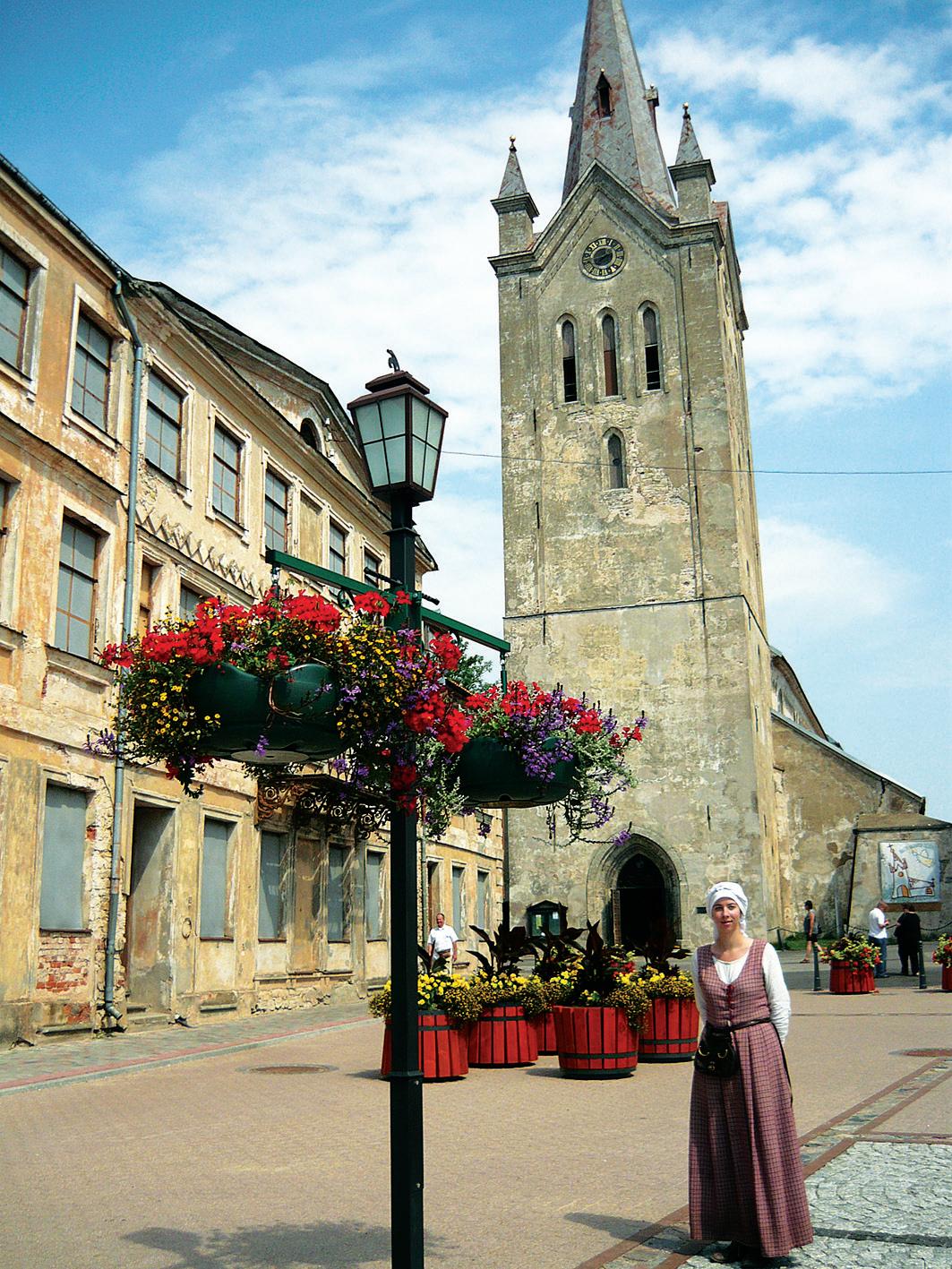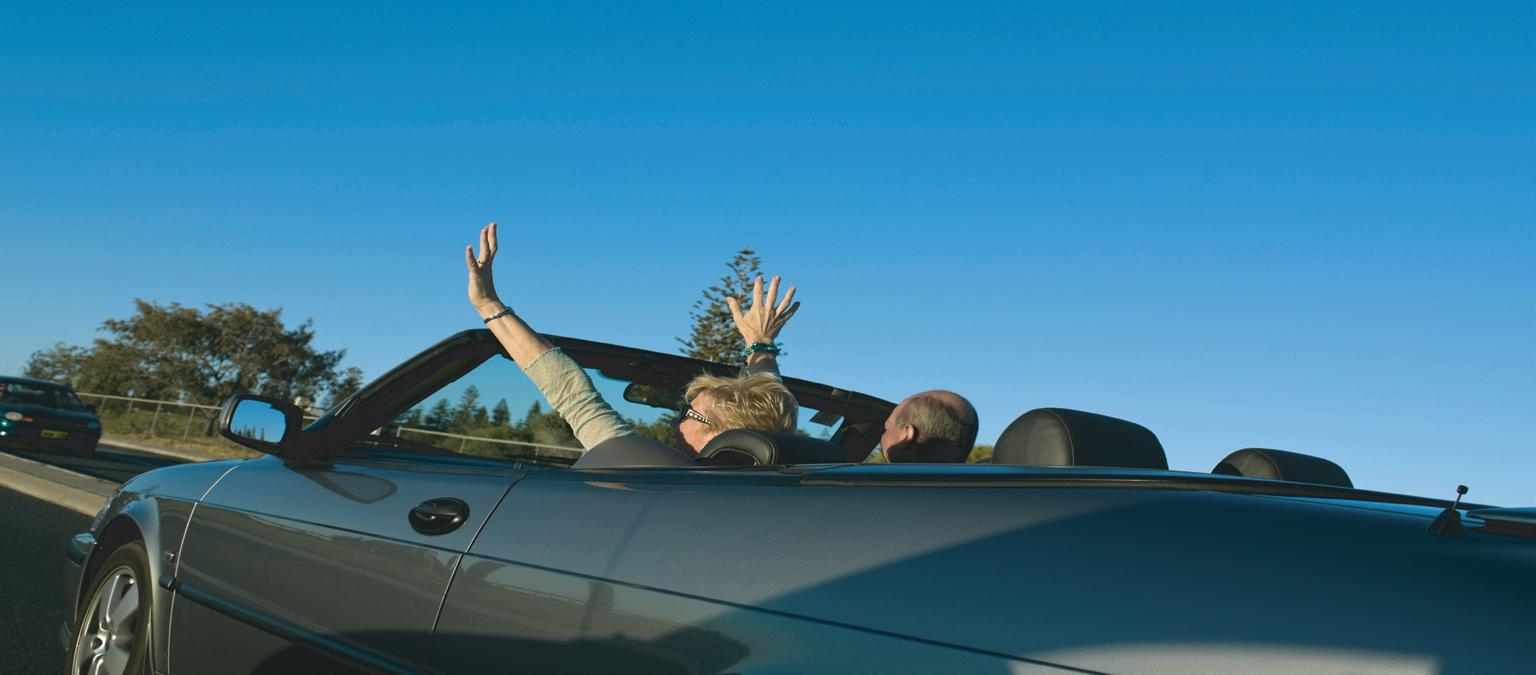
4 minute read
Luscious Latvia
from 2009-10 Sydney (1)
by Indian Link
By THOMAS E KING
While Sigulda can’t claim lofty snow-capped mountains or vast ski fields, this small town 50 km east of the capital of Riga is nonetheless called the “Switzerland of Latvia”. Snow has yet to dust this cosy community so its 1200m bobsled track - built for the Soviet bobsled team and now used for training the Latvian Olympic squad - still awaits the first flake of snow and the initial winter season visitor.
Right now, the colours of autumn are still dancing across this Tasmanian-sized north European nation and perhaps nowhere more energetically than in the leafy hinterlands that encompass Sigulda. October is an idyllic month for hiking and cycling on the pine-lined and flower-laced roads that spring from this quaint country town. And there’s no more pleasant or picturesque journey than a 6km ramble that links two fortresses and ends at a third, the stunning Turaida Castle.
Built on a commanding knoll overlooking unbroken stretches of lush forest and the languid Gauja River, the castle dates back to the early 13th century. After admiring the stunning vistas from elevated vantage points this past summer, my wife and I learned more about the castle’s medieval inhabitants when we leisurely pored over detailed displays in the castle’s well-kept museum.
The fortress, the prime attraction in the 42ha. Turaida Castle Museum Park has been totally restored, unlike another we saw in the nearby town of Cesis. Cesis Castle has been deliberately left unreconstructed and is now considered the single largest complex of castle ruins in the Baltic states of Latvia, Lithuania and Estonia.
We got an inking of its enormous size during an unforgettable lanternlit exploration. Even though it was an unusually hot day at 29°C, the temperature dropped dramatically as we entered the low doorway and descended into the castle’s dolomite and boulder bowels. Dressed in period costume ,the guide who led the way enthralled us with tales of monks who brewed beer and baked bread within the expansive castle compound and chilled us with stories of the dank dungeon where one soul lived in complete darkness for 13 years. Cesis Castle is not the only show in town. Later we walked past rows of restored merchant houses that face Riga Street and continued on to the venerable St John’s Church. Dedicated on June 24, 1284, St John’s – one of the oldest churches in Latvia – looms over quiet Rose Square which was a bustling market place in the late 13th century. The ancient church and even older castle are not past their use-by dates. They, along with a host of other buildings and monuments, are serving as the heritage centrepiece in the bid for Cesis to become the European Capital of Culture in 2014. Diminutive Cesis has some heavy- weight competition, however, as the granddame of the Baltics is also a forceful contender.
Cesis has an outside chance, though Riga which celebrated its 800th anniversary in 2001 is favoured by many to receive the nod. It wouldn’t be the first honour for this city which has been described as “The Paris of the North”.
Located on both banks of the Daugava River, Riga is only 15 km south of the Gulf of Riga, an inlet of the Baltic Sea. Cruise liners from ports afar and ferry services from Lubeck and Stockholm regularly disgorge cashed-up passengers for a fast-paced
A solid stone statue of Riga’s patron saint, St Roland takes centre stage in Rātslaukums Square frenzy of sightseeing, shopping and more than likely not, a boisterous night on the town. We didn’t fancy such sightseeing, shopping and free time options. Instead we selected a comfortable air conditioned bus from northern Lithuania, and decided upon four days of carefree casual discovery without a late night hangover.
As the long distance coach pulled into the bus station that serves this metropolis of over 700,000 residents, I could see what looked like a row of large round roofed buildings. A city of such size needs a large facility for selling huge quantities of produce and the Centre Market has filled this need since 1930.
We wandered around the lively marketplace – one of the largest in Europe – buying in-season strawberries and delicious breads and meats. While doing this we listened to sun-browned vendors speaking in Latvian, Russian and English to local customers as well as tourists who wanted to see something of the local life. Incidentally, I later learned that the immense buildings were previously used as Zeppelin hangers during WW II!
In a different area of town, gigantic
Finnish heralded as the Art Nouveau Capital of the World that would be reason enough to visit this amazing city, but there’s an even bigger attraction.
Old Riga, the most ancient part of the city, is its historic and geographic hub.

We began our visit of the old town known as Vecrīga from Rātslaukums, the central square where the city’s patron saint stoically stands before bedazzled visitors. In the picturesque backdrop of St Roland is the incredibly ornate Blackheads’ House (totally rebuilt in 2001 from the original plans), where bachelor German merchants lived in the mid 14th century.
Beyond, the Gothic classic of St Peter’s Lutheran Church is even older. We took a lift up its sole spire and stepped out on a small observation platform to see the Old City spread out like a giant maze.
Well-worn cobblestone lanes and curving alleyways lead from one architectural treasure, like the sky scraping cathedral that’s still used for worship to the next, which could well be an old warehouse that continues life as a cafe or a boutique. The historic centre of Riga, in fact, has so much to proudly present to the world that in 1997 it was included in the UNESCO cultural heritage list as “a masterpiece of global and specialists MyPlanet, tel 1800 1800 221 712. Visit www.myplanet.com.au

TIP
Available from numerous outlets including hotels and the Old Town-sited Riga Tourist Office, the Riga Card provides free admission to most museums, accommodation discounts, a free walking tour and a complimentary city guide. See www.rigacard.lv
Information
For travel and tourism specifics on Latvia and Riga visit www.latviatourism.lv and www.rigatourism.com. We found Lonely Planet’s Estonia, Latvia and Lithuania to be an essential guide in making the most of our Baltic odyssey. See www.lonelyplanet.com














